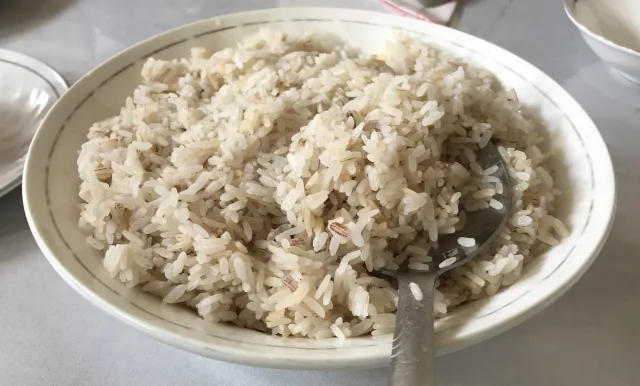Chokuwa rice, fondly known as “Magic rice,” has recently been bestowed with the prestigious Geographical Indication (GI) tag, a recognition of its exceptional attributes and heritage. This remarkable rice variety is deeply intertwined with the culinary legacy of Assam and has a rich historical connection with the powerful Ahom dynasty.
Chokuwa Rice: Cultivation and Heritage:
-
Ancient Legacy: Chokuwa rice, also referred to as Magic rice, has been a dietary cornerstone for centuries. It was a staple for the troops of the revered Ahom dynasty, echoing its historical significance.
- Geographical Origin: The cultivation of Chokuwa rice is unique to the Brahmaputra River region, encompassing areas like Tinsukia, Dhemaji, and Dibrugarh in Assam.
-
Sali Rice Base: Chokuwa rice is a semi-glutinous winter rice variety, specifically categorized as Sali rice. Its distinctiveness lies in its sticky and glutinous characteristics, which are further classified into Bora and Chokuwa types based on their amylose content.
Chokuwa Rice: Unique Features and Culinary Uses:
-
Amylose Concentration: The distinguishing factor between Chokuwa rice variants lies in their amylose concentration. Low amylose Chokuwa rice types, known as Komal Chaul or soft rice, are favored for their tender texture.
- Ease of Preparation: Chokuwa rice is celebrated for its convenient preparation. After a simple soak in cold or lukewarm water, the whole grains are ready for consumption, making it a time-saving option.
-
Nutritional Value: Apart from its convenience, Chokuwa rice boasts significant nutritional value, making it an ideal dietary choice.
Chokuwa Rice: Diverse Culinary Applications:
-
Traditional Pairings: Chokuwa rice is often savored with an array of accompaniments, including curd, sugar, jaggery, and bananas, highlighting its versatility.
-
Assamese Delicacies: This rice variety forms the heart of Assamese cuisine, playing a central role in creating local delights like Pithe and other traditional dishes.
Geographical Indication (GI) Tag:
-
Sign of Authenticity: The GI tag is a distinctive mark that signifies a product’s origin from a specific geographical area, along with its unique qualities and reputation attributed to that region.
- Wide Applicability: GI tags are commonly granted to agricultural products, food items, beverages, handicrafts, and industrial products, emphasizing their geographic heritage.
- Legal Protection: Under the Geographical Indications of Goods (Registration and Protection) Act, 1999, the GI tag is a legal recognition that safeguards the rights of products originating from a particular region.
-
Validity and Renewal: The GI tag is initially valid for ten years, with the possibility of renewal to extend its protection and recognition.
Find More Miscellaneous News Here



 Indian Olympic Medal Winners List Till N...
Indian Olympic Medal Winners List Till N...
 Who is the Inventor of the Gramophone?
Who is the Inventor of the Gramophone?
 HS Dhaliwal Appointed New DGP Of Andaman...
HS Dhaliwal Appointed New DGP Of Andaman...
